Dinger's Aviation Pages
Cunliffe-Owen OA-1 "Flying Wing"
One of the most striking-looking aircraft ever to fly, the Cunliffe-Owen OA-1's chances of success were stifled by the outbreak of WWII.
Having a tail, the Burnelli designs were not "Flying Wings" in the true aeronautical sense; the correct term would be "lifting fuselage". However, they were referred to as "Flying Wings" in contemporary newspaper and magazine articles, (even the British registration papers for G-AFMB give the aircraft type as "Flying Wing"). So, for simplicity, I will refer to them as such.
Having a tail, the Burnelli designs were not "Flying Wings" in the true aeronautical sense; the correct term would be "lifting fuselage". However, they were referred to as "Flying Wings" in contemporary newspaper and magazine articles, (even the British registration papers for G-AFMB give the aircraft type as "Flying Wing"). So, for simplicity, I will refer to them as such.
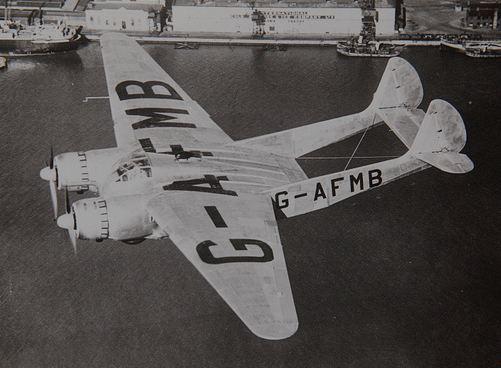
The only Cunliffe-Owen OA-1 built shown in flight over Southampton harbour. Designed to carry 15 - 20 passengers it was a compact design. It had retracting main and tail-wheels The cross-bracing of the tail-booms can be clearly seen. It is sometimes erroneously referred to as a "Clyde Clipper", a name for a previous Burnelli-inspired aircraft project undertaken by a different company, the Scottish Aircraft and Engineering Company.
During the late 1920s and 1930s, American aircraft designer Vincent Burnelli conceived and built a series of aircraft that sought to combine the attributes of a true "flying wing" with the practicalities of stability and size. These culminated in the UB-14 which first flew in 1934. A fuselage of wing profile provided a spacious and strong passenger cabin. A twin-boom tail provided the lateral stability impossible in true flying wing designs until the use of "fly-by-wire" technology. Closely grouped twin engines minimised asymmetric handling problems. The first prototype crashed in spectacular fashion but the passenger cabin escaped with little damage, vindicating the designer's claims for the inherent safety of the design. A second prototype was soon flying (the UB-14B) and attracted worldwide interest.
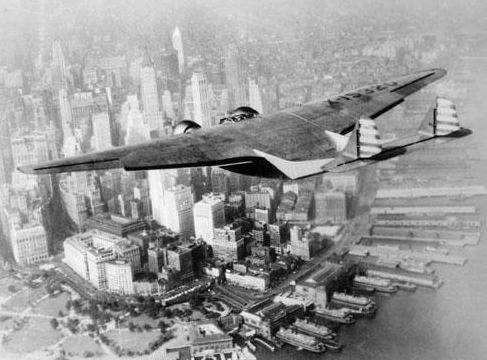
Spectacular shot of the Burnelli UB-14B over Manhattan. The UB-14B was slated for a transatlantic record flight, but in the event travelled to Europe as freight on a cargo ship and ended up impounded by customs in the UK before onward shipment to the Netherlands, where it was re-assembled and embarked on a European demonstration tour. It returned to the USA, reportedly in preparation for a round-the-world record attempt but its licence was revoked in May 1939. It was refurbished and had new engines fitted before being sold to a Nicaraguan airline in July 1943. It was then used for freight-carrying flights over the Caribbean. Last reported as being unairworthy in December 1945, its ultimate fate appears to be unknown.
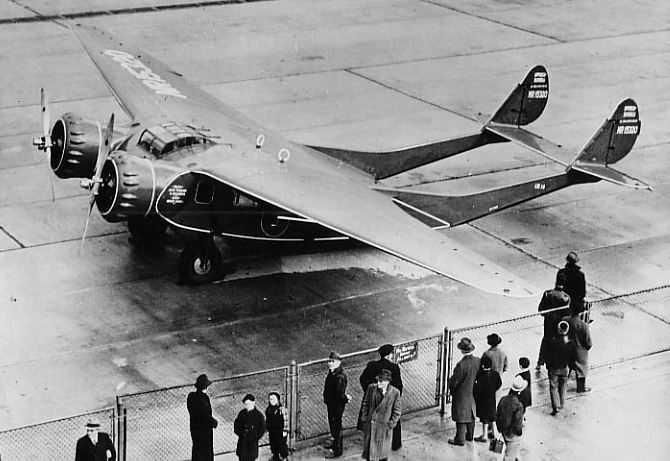
Nice photo of the Burnelli UB-14B. Compare it with the photo of the Cunliffe-Owen OA-1 at the top of the page; you'll see substantial changes. The OA-1 looks a lot larger. The cockpit is completely different and the tail booms of the UB-14B are much more slender than those of the OA-1.
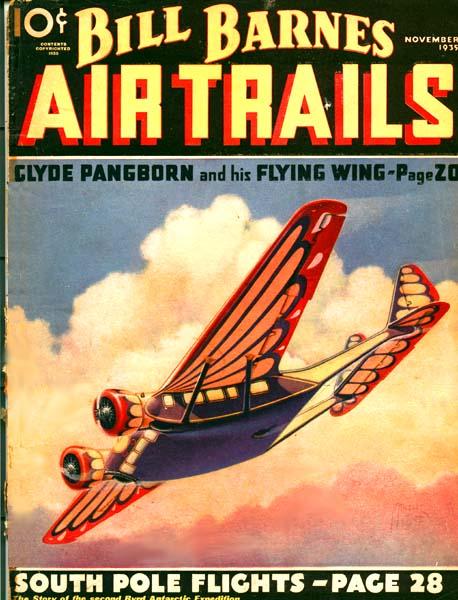
This cover of an American aviation magazine shows an approximation of the Burnelli UB-14 in a particularly exotic colour scheme. The article in the magazine involves Clyde Pangborn's involvement with the "Flying Wing". Clyde Pangborn was a pioneer U.S. aviator who gave considerable backing to Burnelli and who had planned to use the UB-14 on record-breaking flights. Pangborn went on to work for Cunliffe-Owen in the UK and was the test pilot for the first flight of the OA-1. Later he joined the RAF where he was instrumental in setting up the Atlantic Ferry organisation. A true hero; you can read about him in this Wikipedia article <click here>.
Burnelli never succeeded in getting his brainchild into production in the USA, (there is a conspiracy theory about this failure you can read about by clicking on <this link>). However, he had little problem attracting interest in other countries. Unfortunately, in each case he ended up negotiating licence production with companies that wanted to break into the civil aviation marketplace rather than ones already established in it. A deal with the Canadian Can-Car company led to a single aircraft that only flew in 1945 (the CBY-3, to read about it click <this link>), while production in the Netherlands by the Aviolanda company, fell through altogether. In the UK the "Scottish Aircraft & Engineering Company" was formed to build the UB-14 with British Rolls-Royce Kestrel engines. At the time there was huge unemployment in Scotland in the aftermath of the economic depression and there were various schemes to subsidise the setting up of factories in Scotland, especially in the Glasgow area (Blackburn Aircraft was one company that took advantage of this, setting up a flying-boat factory at Dumbarton). It seems the Scottish Aircraft & Engineering Company was set up to take advantage of these schemes, although the only addresses listed in its many press advertisements were in London. These press adverts were prodigious and a lot of interest was whipped up for their 16-seat version of the Burnelli which they called "The Clyde Clipper", a reference to where they hoped to produce the aircraft (there was also to be a cargo-carrying version to be called the "Clyde Carrier"). With war clouds looming they also advertised a bomber version¹, apparently to be called the "Clyde Corsair" and a fighter version, armed with the abortive manually-loaded, short-barrelled American Armaments 37 mm cannon in turrets, to be called the "Clyde Comet". All of this came to nought, the company collapsed with only a wooden mock-up of the Clyde Clipper to show for its efforts. The receivers were called in on the 26th of July 1937.
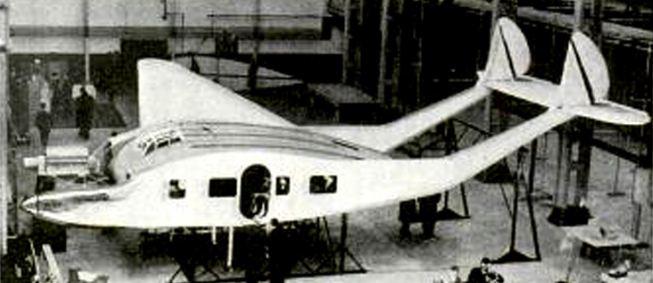
An image of the Scottish Aircraft & Engineering Companies "Clyde Clipper" wooden mock-up at their "Scotia Works" in Wembley, West London. Apparently, the inline Kestrel engine was simply a flat wooden panel painted to give a 3-D representation of the engine. The use of the Kestrel would have given a better view for the pilots than that afforded by the Perseus radial-engined Cunliffe-Owen OA-1. The Cunliffe -Owen retained the large passenger "picture windows" and the passenger door arrangement. There was a recess in the underside of the wing to allow full access to the door which would otherwise have had to be uncomfortably small. You'll see that the Scottish Aircraft "Clipper", with its slender tail booms, looks much more like the original Burnelli than the later Cunliffe-Owen OA-1. The Scottish Aircraft and Engineering company should not be confused with "Scottish Aviation Limited" which was based at Prestwick in Scotland. That was an entirely different company that specialised in training and only moved into aircraft maintenance and manufacturing during the war.
A Youtube video of a contemporary newsreel shows the mock-up of the "Clyde Clipper".
A Youtube video of a contemporary newsreel shows the mock-up of the "Clyde Clipper".
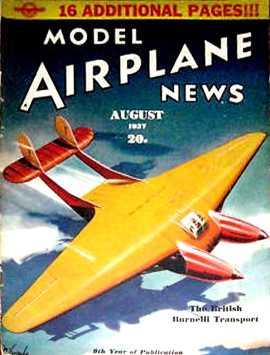
Magazine Cover illustration of Scottish Aircraft and Engineering Company "Clyde Clipper" with inline Kestrel engines.
To pick up the pieces, in stepped Sir Hugo Cunliffe-Owen, a flamboyant industrialist and race-horse owner who had been planning to use a "Clyde Clipper" for his own attempt at winning a New York to Paris air race (he had hoped to employ Amy Johnson to pilot the attempt). He purchased the rights to produce the Burnelli design and built a brand new state-of-the-art aircraft factory at Eastleigh airport near Southampton, which was formally opened by the Mayor of Southampton on the 23rd of January 1939. The choice of Southampton may seem strange given the subsidies available in Scotland but in the late 1930s "Red Clydeside" had a bad reputation for industrial relations. Meanwhile, the Southampton and Solent area was already the home of many aviation companies like Supermarine, Saunders-Roe and Airspeed and promised to have a ready-made skilled workforce available.² Some sources claim the building of the new Cunliffe-Owen factory was subsidised under the "shadow factory" scheme but it is not at all clear if that was the case; it is not on any of the lists of such projects. It seems unlikely that Cunliffe-Owen got any public money for the initial building of the factory.
Sir Hugo had the Burnelli redesigned to use two of the new Perseus sleeve-valve radial engines made by the Bristol Engine Company. The Cunliffe-Owen "Flying-Wing" design was in fact substantially different in structure and larger than the original Burnelli UB-14 and Scottish Aircraft "Clyde Clipper" mock-up. The future of the new aircraft initially looked bright. It promised to have a similar performance and load-carrying capacity to the Douglas DC-2. It took up substantially less hanger space than the DC-2 and offered passengers a comfortable "wide-body" cabin with large picture window views of the ground, unobstructed by the wings (the novelty of air travel and the better views of the ground available at the lower altitudes airlines then flew at meant the view for passengers was considered a very important factor in selling tickets).

On the wet tarmac at Eastleigh, outside the stunning brand-new Cunliffe-Owen factory (soon to be the target of German Luftwaffe bombing) the Cunliffe-Owen OA-1 "Flying Wing" prototype G-AFMB is inspected by factory staff and admirers. You can appreciate how the twin Perseus radials cut off large parts of the pilot's forward view. Note also the much thicker wing booms than the earlier UB-14 and "Clyde Clipper" mock-up. The OA-1 was designed to float if it had to ditch in the water. There were doors in the roof of the cabin to allow passengers to clamber out onto the top of the wing in such an eventuality.
Another benefit of the Burnelli layout was that, with suitable ballast in the rear of the passenger compartment, you could detach the twin tail booms while still leaving the fuselage standing on the tailwheel. They built provision for this into the design. (you can make out the join-line for the tail running between the "A" and "F" serials on the tail boom in the photo above).
Unfortunately, Sir Hugo's timing for starting construction of a new aircraft type could not have been worse. As war clouds gathered all the established aircraft companies found themselves with full order books and aircraft designers, production staff and skilled workmen became scarce. This was to have dire consequences for the new OA-1 Flying Wing. The building of the prototype took much longer than anticipated and it was subsequently slated for a host of detail design flaws and bad workmanship in its construction. By the time the prototype first flew on 12th January 1939, piloted by Clyde Pangborn, the new Douglas DC3 had long replaced the DC2 on the production line and set new standards of performance and economy. British rivals like the deHavilland DH91 Albatross and DH95 Flamingo and the big four-engined Armstrong Whitworth Ensign looked set for success and new designs in the pipeline with pressurised passenger compartments like the Douglas DC-4, Curtiss CW-20 and Fairey FC1 looked set to make the OA-1 obsolescent even before it entered service. It is clear now that the OA-1 was three or four years too late to make any impact on the civil aviation marketplace.
Some sources assume that the OA-1 was assembled from parts shipped over from the USA. There is little evidence for this. The engines were made in Britain, as was the undercarriage. Lots of British companies advertised in the aeronautical press that their products were being used in the OA-1. At the time, currency exchange rates and labour costs meant that items manufactured in the USA could be double or triple the cost of the same items made in the UK, and that is without the extra costs of shipping. So it would have been uneconomic to ship in parts from America.
Unfortunately, Sir Hugo's timing for starting construction of a new aircraft type could not have been worse. As war clouds gathered all the established aircraft companies found themselves with full order books and aircraft designers, production staff and skilled workmen became scarce. This was to have dire consequences for the new OA-1 Flying Wing. The building of the prototype took much longer than anticipated and it was subsequently slated for a host of detail design flaws and bad workmanship in its construction. By the time the prototype first flew on 12th January 1939, piloted by Clyde Pangborn, the new Douglas DC3 had long replaced the DC2 on the production line and set new standards of performance and economy. British rivals like the deHavilland DH91 Albatross and DH95 Flamingo and the big four-engined Armstrong Whitworth Ensign looked set for success and new designs in the pipeline with pressurised passenger compartments like the Douglas DC-4, Curtiss CW-20 and Fairey FC1 looked set to make the OA-1 obsolescent even before it entered service. It is clear now that the OA-1 was three or four years too late to make any impact on the civil aviation marketplace.
Some sources assume that the OA-1 was assembled from parts shipped over from the USA. There is little evidence for this. The engines were made in Britain, as was the undercarriage. Lots of British companies advertised in the aeronautical press that their products were being used in the OA-1. At the time, currency exchange rates and labour costs meant that items manufactured in the USA could be double or triple the cost of the same items made in the UK, and that is without the extra costs of shipping. So it would have been uneconomic to ship in parts from America.
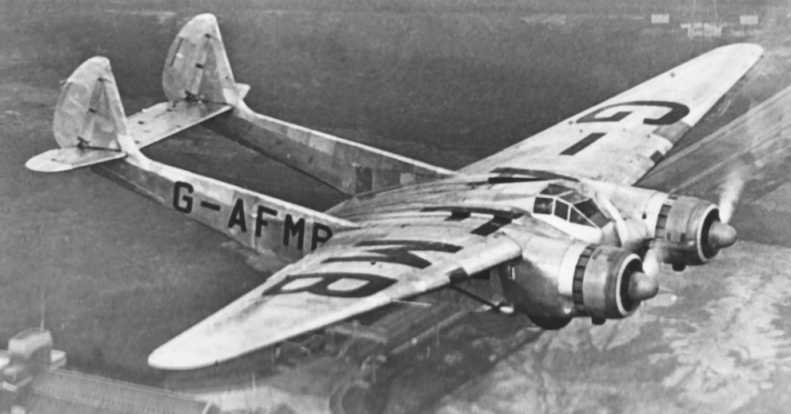
Cunliffe-Owen OA-1 in flight.
In June 1939, the Cunliffe-Owen OA-1 went to the Aircraft and Armament Experimental Establishment (AAEE) at Martlesham Heath for evaluation and certification, testing continued until after the outbreak of war. Its flying qualities, although not perfect, were generally adequate for a prototype aircraft and its short take-off and landing run were remarked upon. However, as already mentioned, many aspects of the detail design were condemned, and the construction and workmanship were found to be woefully poor. The poor ergonomics of the cockpit, the flimsiness of the passenger windows and the lack of any anti-corrosion protection came in for particular criticism. It was refused a Certificate of Airworthiness (CofA) and returned to the manufacturer's Eastleigh factory. If Sir Hugo's timing for constructing the prototype OA-1 was disastrous his timing for building a brand-new aircraft factory could not have been better. When war was declared his factory space became much in demand and production from other manufacturers (notably Supermarine who shared the Eastleigh airfield with Cunliffe-Owen) and the need to reassemble aircraft shipped over from the USA into the port of Southampton soon filled it to bursting. There would have been no space to produce the OA-1 even if it had been a success. The Cunliffe-Owen factory was very badly damaged by the German Luftwaffe during the Battle of Britain, but it was repaired and continued in use throughout the war, including being used for the construction of 250 examples of the Seafire Mk III. The Cunliffe-Owen Seafires were particularly valued by pilots because they were completely flush-riveted, giving them better performance than those built by other companies.
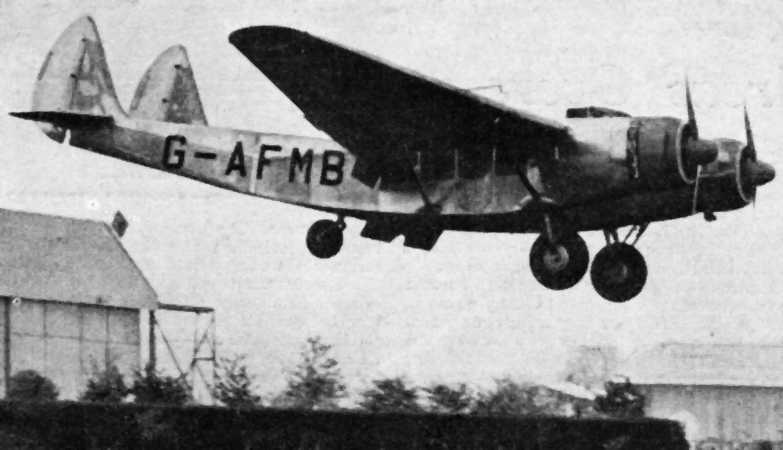
OA-1 coming in to land. Of particular note is the fuselage flap, this gave the aircraft a remarkably good short-field performance.
What to do with the OA-1 prototype? The company did find time to fix many of its shortcomings and so it was granted a Certificate of Airworthiness late in 1940. Since one of the major criticisms of its construction was the lack of any sort of anti-corrosion finish, what better place to use it than in a desert, where corrosion would be no problem! The aircraft was impressed into the RAF on 31st May 1941(although no RAF serial was allocated). In June 1941 it was piloted to North Africa by the dare-devil flyer Jim Mollison with a crew of three³, to join the Free French Forces. It was flown out by a circuitous route, via Gibraltar, Malta, Cairo, Wadi Halfa, Khartoum, El Fasher, El Geneina and Fort Archambault to Bangui. One source said that Mollison claimed to have flown the first leg to Malta over the length of occupied France⁴ (although it's hard to see how this could be done, except at night and the hours of darkness would have been very short in June). There were some doubts that it could have landed at Gibraltar since the runway there had not been lengthened for large aircraft at that time. However, the OA-1's short-field performance must have made it possible since an eyewitness account of it taking off from Gibraltar on the 6th of June 1941 exists⁵. A photo of the OA-1, reportedly in either Malta or Egypt, shows it to have camouflaged upper surfaces (that was normal for British civil aircraft at the time). It also shows it still to be wearing its civilian registration.
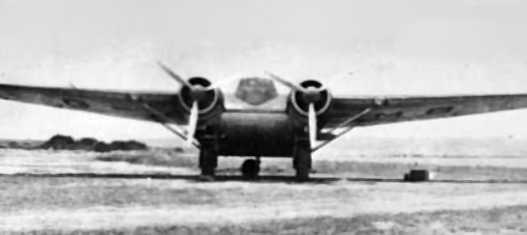
This photo of the OA-1 has been variously identified as being taken in either Malta or Egypt on its way to French Africa. A better photo, obviously taken at the same location, can be found in the Summer 2008 edition of Air-Britain Archive magazine, where it is identified as being in Malta. In the image above, you can clearly see the aircraft still has its civil registration, G-AFMB.
Rumours that the OA-1 was used by General Charles de Gaulle during his visits to French Africa are not backed up by any solid evidence (although de Gaulle did present Mollison with a jewelled cigarette case for ferrying the OA-1 out). The OA-1 was used for cargo carrying across French Africa, operated by Lignes Aériennes Militaires (LAM) a nominally civilian organisation, although dedicated to supporting the Free French military. Photos show that the air intakes under the engines were fitted with large air filters, similar to the ones used on Wellesley bombers, to protect them from the sand and dust of the desert. It was in service until at least June 1944, when it was apparently damaged at Rayaq in Lebanon, after which it was flown to Egypt for repairs. On VJ night 1945 it was languishing in the salvage compound at No 2 Transport Aircraft Repair Unit (TARU) at El Kabrit in Egypt, stripped of wings, engines and most interior fittings, it was burnt on a bonfire to celebrate the end of hostilities.
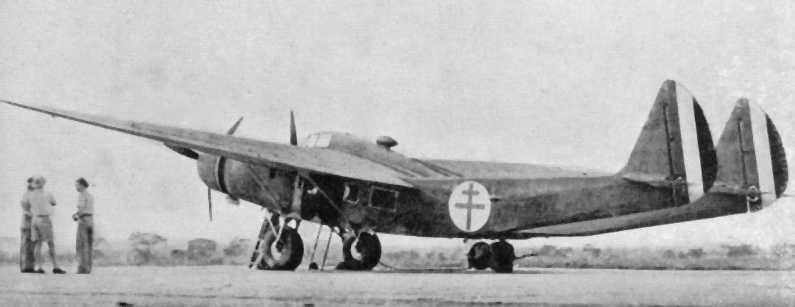
The OA-1 in Free French service.
And so ended the Cunliffe-Owen OA-1 "Flying Wing", although the company did continue to look into possible future developments. It is possible that the design they prepared for an Air Ministry 1943 specification for a twin-engined aircraft to operate off aircraft carriers (S6/43 later reissued as S11/43) had a "lifting fuselage" layout. An ambitious design for a post-war 4-engined transatlantic airliner that looked like the Lockheed Constellation fell through. Cunliffe-Owen reverted to a more modest conventional layout for their "Concordia" 10-passenger feeder-liner, the prototype of which flew in 1947. There was no market for such a new aircraft in a world awash with cheap ex-military transports like the DC3 Dakota and the failure of the project saw Cunliffe-Owen withdraw from the aviation marketplace, although the company did build two examples of the Cierva W11 "Air Horse" helicopters under contract to the G&J Weir company. The construction of the M27 motorway separated the Cunliffe-Owen factory from Eastleigh Airfield (now Southampton Airport). The site was occupied for many years by the Ford Motor Company, which built the Transit van there.
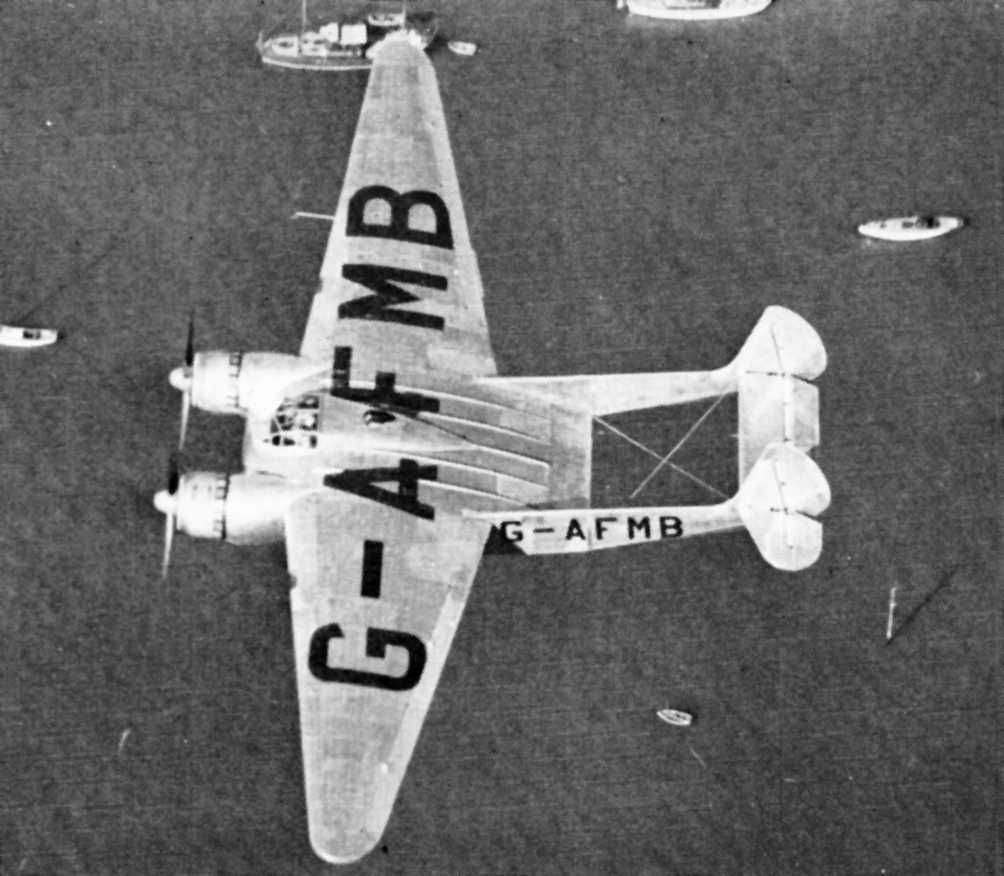
OA-1 over the Solent.
OA-1 Specifications
Engines: Two Bristol Perseus XIV-C single-speed, medium supercharged sleeve-valve radials of 710 horsepower each.
Max Speed: 218 mph (351 kph), expected to cruise around 180 mph (290 kph). Higher maximum and cruising speeds were advertised in Cunliffe-Owen's trade adverts.
Ceiling: About 20,000 ft (6,096 metres). Being unpressurised it could not have operated as a normal passenger aircraft at such heights.
Crew of two (pilot and co-pilot). Passenger capacity 20 (the prototype was fitted out for only 15 passengers in luxurious armchair seats made by the Rumbold company).
Fuel capacity: 650 gallons (2,955 litres) in eight wing tanks.
Maximum range: 1,300 miles (2092 km). Some sources quote a much higher figure of 1,950 miles (3,138 km) which seems improbably high for the amount of fuel carried as standard. It is possible that auxiliary internal fuel tanks were fitted for the flight out to Africa, giving rise to the latter figure.
The Mk XIV-C version of the Bristol Perseus sleeve-valve engine used on the OA-1 was a civil-rated engine that produced substantially less power (710 hp) than the military Perseus XII. (905 hp), although some of Cunliffe-Owen's trade adverts quoted the military figure.
WHAT IF?
The Cunliffe-Owen OA-1 Flying Wing was almost certainly too late to be a success in the civil marketplace. By the time it was ready to fly, it was already 3 or 4 years behind the times in terms of performance and economy. When Burnelli had first flown his UB-14 design in 1934 it was cutting edge. If he had successfully negotiated production rights with established aviation firms he might well have produced a winning product that would have gone down as one of the greats of aviation history but the delay with dealing with "start-up" companies meant he missed the boat and the great promise of the basic UB-14 design was lost. It is interesting to speculate what might have happened if he had got companies like Avro or Vickers interested in producing his designs. Avro produced the Type 618 airliner and later variants based on licences purchased from Fokker, while Vickers produced a progression of "Viastra" airliner designs based on technology licensed from Michel Wibault, both were coming to the end of their development potential just as the UB-14 became available. Who knows, if the UB-14 and its derivatives had reached production in the USA and UK maybe it could have taken the place of the C-47/DC3 Dakota in the air forces of the Allies?
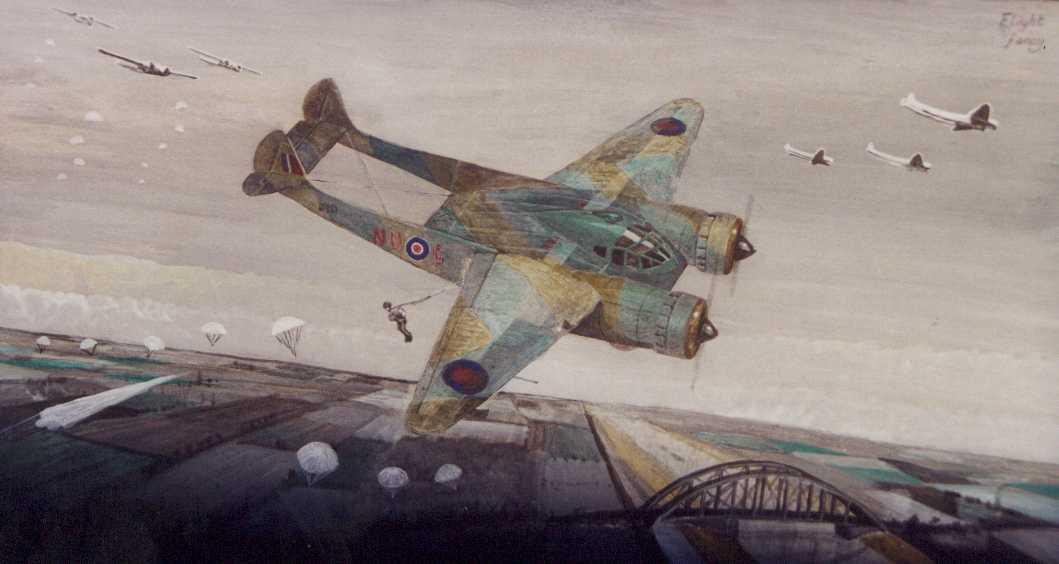
My painting shows the Cunliffe-Owen OA-1 as if it had gone into production and been used as a transport aircraft by the RAF in WWII. In this case shown dropping paratroops. I've fudged the problem of exiting by not showing the doorway the paratroops are jumping from. On the original design if you had jumped from the standard door you would have gone straight into the rear wing support strut! I have reasoned that a smaller parachute door would have been positioned to the rear of that strut or in the floor of the aircraft.
Looking at the Cunliffe-Owen OA-1 in isolation, it is tempting to speculate that if Sir Hugo had been able to get the quality of staff he needed he might have got the OA-1 prototype flying six months to a year earlier, and without the myriad design and construction flaws it actually had. Under those circumstances, it's possible to imagine aircraft starting to come off the production line of the new factory about the time the war started. Even in those circumstances, it's probable that the Air Ministry would have only allowed a limited production run before turning the factory over to bomber or fighter production (production of all the promising British transport aircraft, DH91 Albatross, DH 95 Flamingo and AW Ensign were all stopped after only a few examples). The Air Ministry simply did not foresee that the new World War would demand huge numbers of transport aircraft; it thought the outcome of the war would be decided within weeks or months of war being declared by massive bombing by the competing fleets of bomber aircraft.
Of course, it is possible that if the OA-1 had made it into production, the design might have been adapted for more warlike uses, although only as an interim stop-gap. Hence the flight-of-fancy painting below.
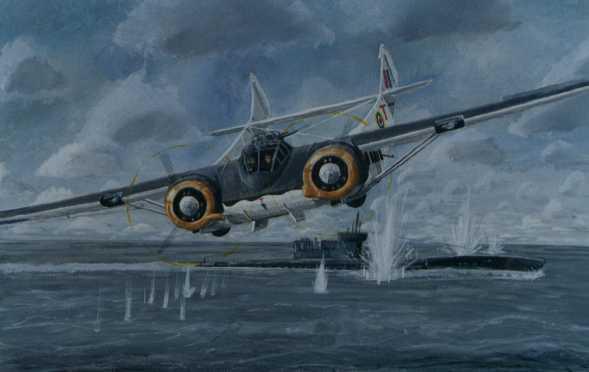
This painting shows the OA-1 as it might have appeared if it had been pressed into service by RAF Coastal Command. Such a thing is not at all unlikely if it had been in production. The Lockheed Hudson was a conversion of an airliner, as was the Avro Anson, both of which were used by Coastal Command. Also, a conversion based on the Douglas DC2 airliner called the B-18 Bolo was used for coastal/ocean patrol by the Canadian Air Force (who called it the "Digby") and was also used extensively by the USAAC for the same role in the Caribbean.
One thing is sure, if it had gone into production, being built in Southampton, the OA-1 would never have been called a "Clyde Clipper". Perhaps a better name would have been "Solent Schooner"!
Interestingly, the modern UAV drone produced by Windracers, which has started deliveries to remote islands and communities for the Royal Mail, has a lifting fuselage configuration very similar to the OA-1. It did its first trial flights to the Isle of Wight over the Solent. You can see a short YouTube video of it at <this link>.
Notes
¹ The Scottish Aircraft and Engineering Company's "bomber" was advertised with pictures of an unmodified UB-14 and seems to have been just their "Clyde Clipper" with minimum modifications to enable it to carry bombs. It should not be confused with the "Burnelli A-1 Bomber" which was a different project altogether, designed by Burnelli back in the USA with a more traditional looking fuselage nose projecting forward of the lifting fuselage with a bomb aimers position and a front turret. It also had much deeper tail booms able to accommodate a dorsal turret in each.
² Not only were the aviation workforce in the Southampton and Solent area very skilled, they were also noted for a general lack of union activity, which meant they were also relatively lowly paid (Read C.R. Russells "Spitfire Postcript" ISBN 0 9524858 0 X ).
³ Mollison and his crew were in the "Air Transport Auxiliary" (ATA). Although the ATA had ranks and usually wore uniforms, its members were still civilians; they had the same status as a civilian airline crew. It was highly unusual for an ATA crew to fly outside of British airspace.
⁴ See the article "Air France Libre" in the list of sources below.
⁵ See page 103 of "Wings at Sea", a wartime autobiography by Gerard Woods, although when he saw the OA-1 taking off from Gibraltar he assumed it was flying back to the UK. Published by Conway Maritime Press in 1985. ISBN:0851773192. Thanks to Brian Johnston for alerting me to this account.
Links
A Youtube video of a contemporary newsreel shows the mock-up of the "Clyde Clipper".
Video of the Cunliffe-Owen OA-1 on the British Pathe Newsreel Website
You get a glimpse of the OA-1 in this video of French officers touring England in 1939.
Details of Cunliffe-Owen on the "Hampshire Airfields" website.
The story of Cunliffe-Owen on the "Solent Sky" website.
Video on YouTube of the damage to the Cunliffe-Owen factory after a Luftwaffe raid in September 1940. The Heinkel He111 had been shot down the previous month and was being stored at the factory at the time (it was on a tour of British towns for a fund-raising drive).
A Youtube video of a contemporary newsreel shows the mock-up of the "Clyde Clipper".
Video of the Cunliffe-Owen OA-1 on the British Pathe Newsreel Website
You get a glimpse of the OA-1 in this video of French officers touring England in 1939.
Details of Cunliffe-Owen on the "Hampshire Airfields" website.
The story of Cunliffe-Owen on the "Solent Sky" website.
Video on YouTube of the damage to the Cunliffe-Owen factory after a Luftwaffe raid in September 1940. The Heinkel He111 had been shot down the previous month and was being stored at the factory at the time (it was on a tour of British towns for a fund-raising drive).
Sources
"First of the Wide-Bodies?": A 4-page article by Peter London in the July-August 1995 (No 58) Edition of "Air Enthusiast" Magazine.
"Burnelli's Lifting Fuselages": A series of articles by Richard Riding that appeared in the March to July 1980 editions of the "Aeroplane Magazine". It is the June edition that covers the Cunliffe-Owen OA-1.
"The Cunliffe-Owen COA-1": an article in the "Head-On View" series (number 27) in the summer 2008 edition of "Air-Britain Archive" magazine.
"Air France Libre": an article by Michael West in the spring (March) 2011 edition of "Air-Britain Archive" magazine.
"Cunliffe-Owen Flying Wing": A two-page article in the Aircraft Described series (No143) in the July 1965 edition of "Aero Modeller" magazine (unattributed).
"A Lift Less Ordinary": A 5-page article by Peter London in the January 2016 edition of "Aeroplane" magazine.
"British Built Aircraft, Vol2, South West & Central Southern England": By Ron Smith, First published 2003 by Tempus.
A letter from Norman Smith giving a detailed first-hand account of the ultimate fate of the Cunliffe-Own OA-1 at El Kabrit in Egypt was printed in the "Skywriters" letter pages of "Aeroplane Monthly" magazine in November 1979.
